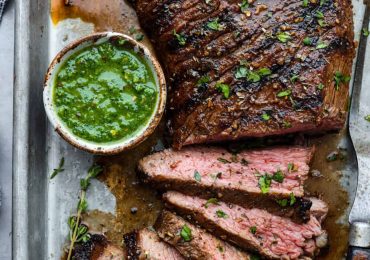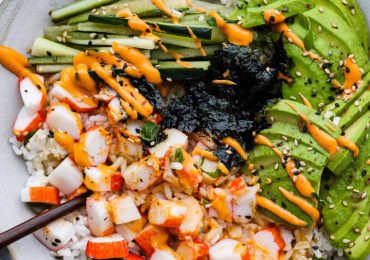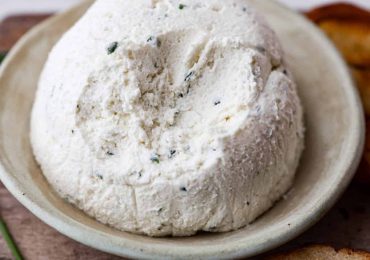
CHICAGO — It has been a dismal year in the plant-based meat category with retail sales down from previous years when the newness of the category invited trial. While inflation has played a part in unit sales decline, numerous consumer studies suggest it’s also related to product quality.
Combined refrigerated and frozen plant-based meat alternatives generated a little over $1 billion in retail sales in 2023, according to Circana, Chicago. Dollar sales were down almost 10% while unit and volume sales were down about 15% versus 2022 levels.
“Refrigerated plant-based meat alternatives, typically found in the meat case or produce department, had a tough year,” said Anne-Marie Roerink, president, 210 Analytics LLC, San Antonio. “The calendar year generated $327 million, down from a high of $481 million in 2021.”
Circana attributed the decline to the number of households purchasing refrigerated plant-based meat alternatives. Only 6.9% of US households reported purchasing the products in 2023, down 18.5% from the previous year.
The frozen department was not much better. Frozen meat and poultry alternatives sales reached $64.4 million in December 2023, down 8.7% from the previous year, according to Circana. Unit and volume sales were down 12.9% and 11.7%, respectively.
“Creating a flavor and texture to make someone a repeat purchaser has been a challenge, and it continues to be so,” said Jennifer Olmstead, senior director of US marketing and communications, California Walnut Board, Folsom, Calif. “Animal-analogs tend to be more expensive, and their ingredient lists often struggle to meet discerning consumers’ clean label needs.”
Further, sustainability cannot be the No. 1 selling point, said Jack Bobo, director of the University of Nottingham’s Food Systems Institute in the United Kingdom. First comes taste, followed by nutrition and price.
“Consumers don’t change their eating habits to save their lives. Why would they do so to save the planet?” Bobo said.
Better than beef
When it comes to plant-based meat, US consumers say the benchmark is beef, but better, according to research from Kerry, Beloit, Wis. The research also shows there is such a thing as too much flavor. Salt levels need to be just right, and the flavor must be authentic. Consideration must also be given to the lingering aftertaste.
“Flavor alone is not enough to satisfy consumers,” according to Kerry’s research. “Consumers want a texture and mouthfeel that’s close to meat. Consumers also desire authentic cooking flavors. Chargrilled and caramelized notes are favorite flavors in plant-based burgers.”
With the benchmark being “better than beef,” depth and complexity of flavor is crucial, suggesting that multiple tastes and flavors must be detected at the same time. This is where umami and kokumi may assist, along with cooking flavors.
Kerry noted one of the most important characteristics in a plant-based burger is having variation in the bite, firmer on the outside due to charring with a softer inside.
Cooking sizzle also contributes to the experience by creating positive expectations that the burger will be flavorful and succulent.
Adding fat
Succulence is associated with the fat component in plant-based meats, as is marbling in certain beef and pork products such as bacon alternatives. Fat also provides sizzle and has a role in flavor.
“It is important for the flavor in plant-based meats to be supported by vegetable fats and oils,” said Megan Brazil, scientist, AAK USA, Edison, NJ. “Plant-based meats may contain up to 25% fat. The impact fat has on plant-based meats is contingent on the amount of fat included in the plant-based meat, the plant source of the fat or oil solution, the ratio of saturated and unsaturated fatty acids and the melt profile of the fat.”
AAK offers fat and oil solutions to enhance meaty flavors by increasing flavor release. In some instances, they contribute their own meat-like flavors.
“If too little fat is used, the product can eat dry or crumbly,” Brazil said. “If too much fat is used, the product will eat greasy. The types of vegetable fats and oils used in a formulation can contribute different texture characteristics. Coconut oil, for example, is high in saturated fat, which provides a more unctuous juiciness, while sunflower oil provides cohesion, which can contribute to homogeneity in the product.”
Fat and oil blends often are used to optimize desirable attributes, including keeping saturated fats on the lower side.
“AAK recently received GRAS approval for the use of shea stearin in plant-based foods,” said Andrea Weis, scientist with AAK. “Shea stearin is frequently used in confectionery applications due to its unique melting profile, and we see the positive potential for expanding its use into the plant-based meat segment.
“When compared to coconut oil, the most common source of solid fat used in plant-based foods today, shea stearin contains less saturated fat and retains more solid fat at higher temperatures. Product developers now have a new source of solid fat to experiment with and a means to create plant-based meat products with an improved nutritional profile and sensory experience.”
AAK also offers fat flakes and particulates that are made from 100% coconut oil. They are intended to mimic the appearance of traditional fat marbling.
“During the cooking process, the fat from these flakes and particulates melts into the plant-based meat matrix, enhancing flavor delivery and imparting tenderness and succulence to the finished product,” Weis said. “A portion of the oil that melts out during this cooking process can also serve as a cooking medium for applications like burger and sausage patties.”
Tackling the issue of texture
Eighty-two percent of global plant-forward consumers believe it is important for meat alternatives to mimic the texture of meat, according to ADM Outside Voice, Global Protein Consumer Discovery Report, January 2023. The focus is driving manufacturers to seek new ingredients and technologies that may elevate the overall sensory experience, including the use of functional protein and carbohydrate ingredients.
The ingredients will compete for water in the plant-based matrix. It’s important they are properly hydrated and that the water be bound and stay in the burger, nugget or other plant-based product until it is time to eat.
“We understand how to build textures, whether accomplished with a single-ingredient solution or with the use of a customized systems solution,” said Megan Brooks, principal technologist – technical service, Ingredion, Inc., Westchester, Ill. “Proper hydration of functional ingredients is critical to achieving optimal performance in your finished product.”
Phosphate solutions play a role with texturizing plant proteins. They help formulators develop appealing products by improving the water-holding capacity, fat absorption, emulsification and gelling properties of proteins.
“Innophos developed a tetrasodium pyrophosphate-based solution that results in a much firmer texture, more closely resembling traditional chicken nuggets,” said Amr Shaheed, technical service manager – food applications for Innophos, Cranbury, NJ. “In applications with breaded nuggets that utilize texturized pea protein, this solution not only improves texture but also maintains the nugget’s shape upon cutting.”
Kemin, Des Moines, Iowa, offers a line of functional proteins that may be used in breaded and fried products, such as nuggets. The proteins help to increase yield and improve quality.
“The protein is topically applied immediately prior to submersion in frying oil,” said Courtney Schwartz, marketing director with Kemin. “This creates a micro-barrier around the product that not only holds in water necessary to create a juicy product but also prevents too much oil from being absorbed into the product and becoming oversaturated causing items to be soggy. Instead, it remains crispy with a less greasy mouthfeel.
“Additionally, less oil uptake improves the product’s nutritional information. A reduction in oil usage and waste with extended oil fry life due to increased breading adhesion may also lower costs.”
Ground beef alternatives have their own texture challenges. Walnuts may assist.
“The texture of ground or chopped walnuts can mimic the crumbly texture of ground meat, adding a meaty bite to the plant-based dish,” Olmstead said. “And, walnuts’ natural oils, umami taste and nutty flavor can contribute to the depth of flavor making them a versatile ingredient for plant-based alternatives.”
The California Walnut Board has developed prototypes of ground products, such as meatballs and patties. When walnuts are part of the formulation, many of the recipes have fewer than five ingredients that consumers will recognize, said Olmstead.
Protein content matters
Beyond taste and texture, nutritional value also is important for consumer adoption within the alternative meat category. Issues of importance include offering appealing sodium and saturated fat levels, as well as protein content and quality.
“Consumers are increasingly recognizing the importance of bringing more protein into their diets through various sources, including both plant- and animal-based proteins,” said Jacquelyn Schuh, global protein and savory marketing director, ADM, Chicago. “These consumers understand that it’s not an all-or-nothing approach when it comes to protein consumption, and they’re adopting more dietary diversity as a result. This behavioral shift is also lending itself to the expansion of hybrid protein solutions.
“Hybrids enable formulators to spotlight emerging plant-based ingredients beyond pea, including lupine, quinoa, sorghum, amaranth or navy bean-based proteins. Combining these with more recognizable plant-based proteins like soy, wheat or pea may also help familiarize consumers with new or novel-sourced ingredients.”
ADM has developed several textured protein systems to support the structural attributes of plant-based fish, poultry, beef and pork products. The systems typically contain combinations of soy and pea proteins to deliver nutrition and functionality.
“It’s critical that formulators use the right protein to achieve the desired texture for their product format,” said Melissa Machen, principal technical account manager – protein ingredients, Cargill, Minneapolis. “Plant proteins are the backbones of these products, so finding the right botanical protein or protein blend is paramount. By balancing the micro- and macronutrients in protein, we can use high-moisture extrusion to create a textured protein piece with better structure and more fiber definition.
“We’ve also worked with soy and wheat protein blends to create new textures and lighter colored proteins. These blends, which yield a whiter, plant-based, textured protein, could be especially useful for formulators developing plant-based poultry- and seafood-alternative products.”
IFF’s Nourish division, St. Louis, developed a new line of plant proteins intended to mimic the texture of whole muscle pieces of meat.
“The protein — in this case soy protein — is combined with alginates during extrusion, which allows it to increase the firmness of the protein pieces after hydration, and most importantly, makes it resistant during processing,” said Cintia Nishiyama, global product marketing for proteins solutions. “It is a low-moisture extrusion protein, so that means it’s shelf stable. Due to this different extrusion process, it has a very meat-like texture at a level that typical low-moisture extrusions are not able to achieve.”
Being shelf-stable, less energy is used during storage and transportation and translates to lower costs.
“This ingredient contains 80% protein, which is very important so manufacturers can create plant-based meat alternatives in parity with their meat versions in terms of protein content and protein quality,” Nishiyama said. “Our customers get a dry protein product, which they hydrate and then can easily incorporate different flavors and natural colors, recreating plant-based versions of chicken, beef, pork and lamb.
“So, with one ingredient, manufacturers can create entire product lines of meat alternatives simply by adjusting hydration levels, adding flavors and colors, and with the right seasoning, make signatures dishes.”
Such signature dishes are being offered by several frozen food brands. They are usually sold as single-serve convenience meals that are ready to eat after a few minutes in the microwave.
“Plant protein is often easier to incorporate into these types of applications, as there is limited impact on the overall taste and texture characteristics of the finished product,” said Romain Joly, global head of proteins business line, Roquette, Lestrem, France. “We recently expanded our multi-functional pea protein range to include ingredients designed to improve the taste, texture, creativity and versatility of plant-based meals. One ingredient provides a firmer bite and pleasant chewiness. It is suited for ground applications, such as lasagna or chili. The other delivers a fibrous texture and succulent juiciness to chicken and fish alternatives. Supplied in small chunks, this ingredient is ideal for use in meal kits and just-add-water applications.”








